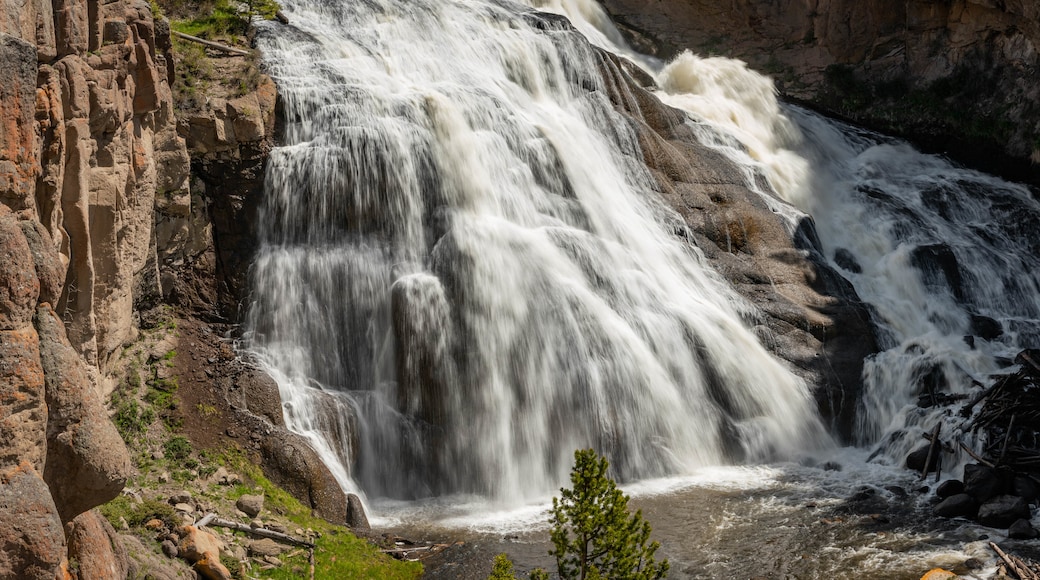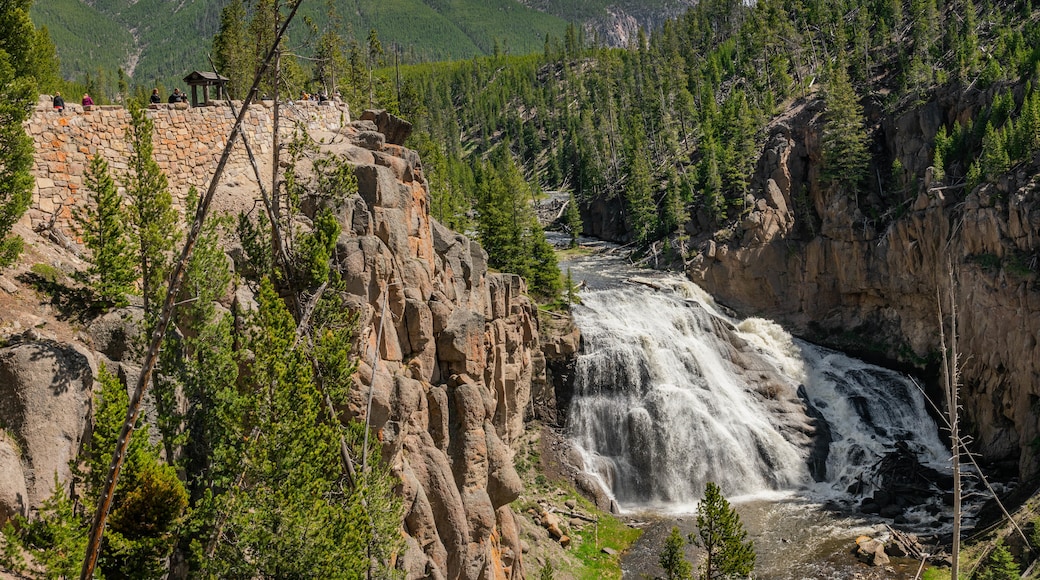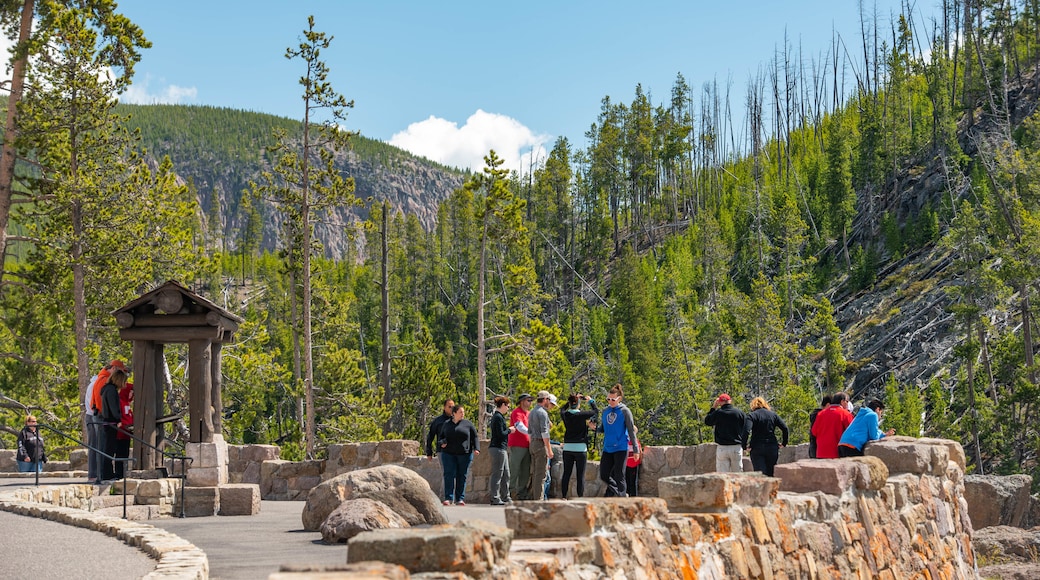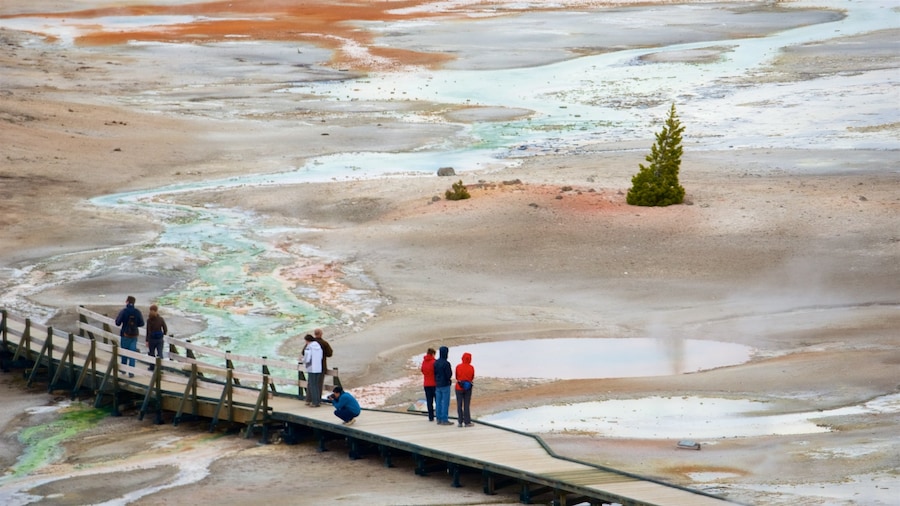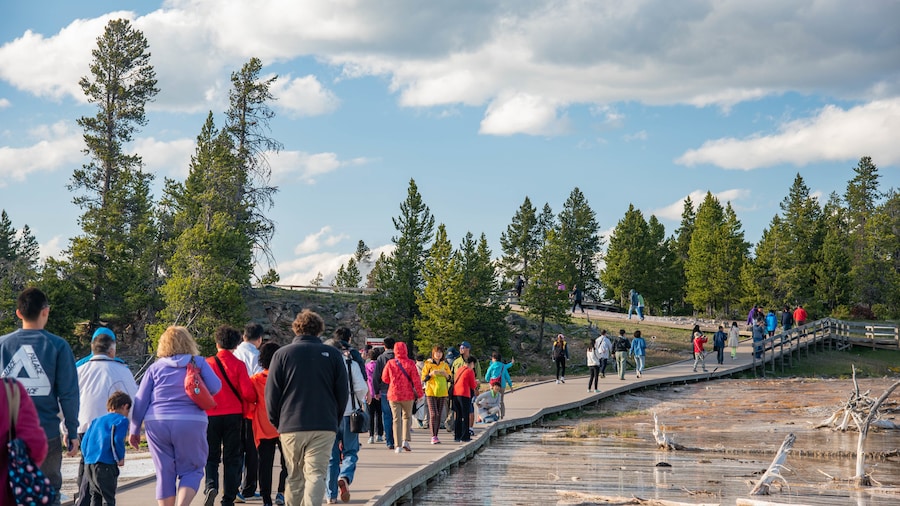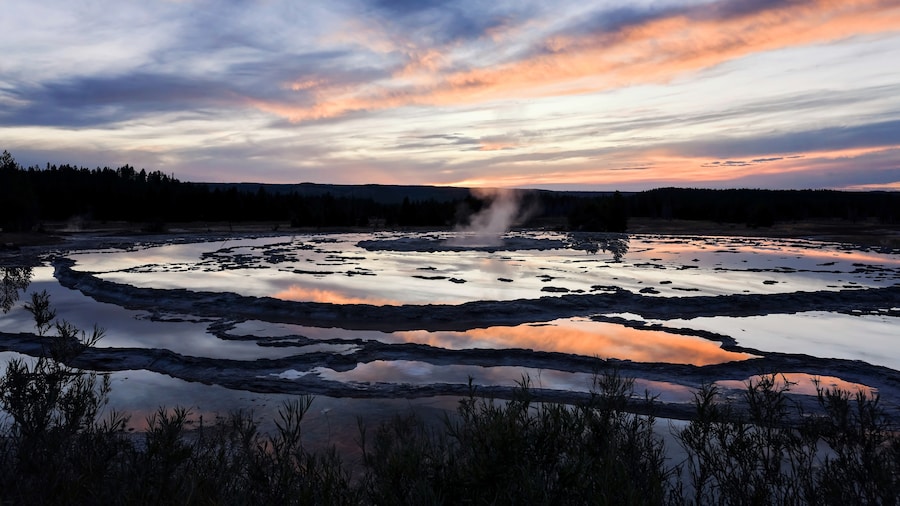Include this graceful waterfall in your list of things to see and experience in one of America’s favorite national parks.
When exploring Yellowstone National Park, be sure to visit Gibbon Falls. Watch the descent of the water as it plays over rocks on an 84-foot (26-meter) drop as the Gibbon River changes elevation. View the falls from a platform near the parking area or follow a paved trail to get a closer look. The area below the falls is also a popular spot for fly-fishing. Try casting a line here.
Gibbon Falls are located in the area known as the Caldera Rim, which was formed from volcanic activity 600,000 years ago. Just south of the waterfall is another interesting geologic area known as Tuff Cliff. The tall cliff consists of volcanic ash that has been formed into hard rock by compression. Stop at this quiet wayside for a picnic.
Norris and Madison, the small communities at the northeast and western junctions of the road passing the falls, have their own unique attractions. Stroll along boardwalks over thermal waters that are part of Norris Geyser Basin, the oldest and hottest of the park’s hydrothermal areas. Most of the water features are acidic and at temperatures considerably above the boiling point of water. The Norris Geyser Basin Museum is a historic landmark with exhibits on the area’s geothermal features.
Similar to Norris’s museum, the Madison Information Station dates to 1930. Madison Campground is one of the most popular places to stay in season because of its central location in the park, not too far from the popular attraction Old Faithful. Plan to stay at the campground and be close to many trails that offer fascinating features, as well as other nearby popular attractions.
Pay the weekly or annual fee to enter Yellowstone National Park. Find Gibbon Falls while traveling southwest from Norris on the Grand Loop Road, roughly halfway to Madison, in the park’s central region. Note that the road closes from early November to late April. Keep your camera handy as you discover one incredible scene after another.

